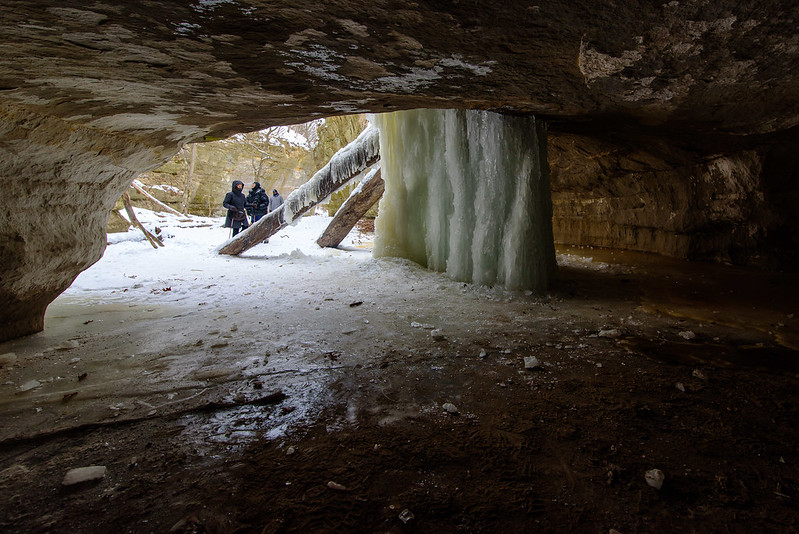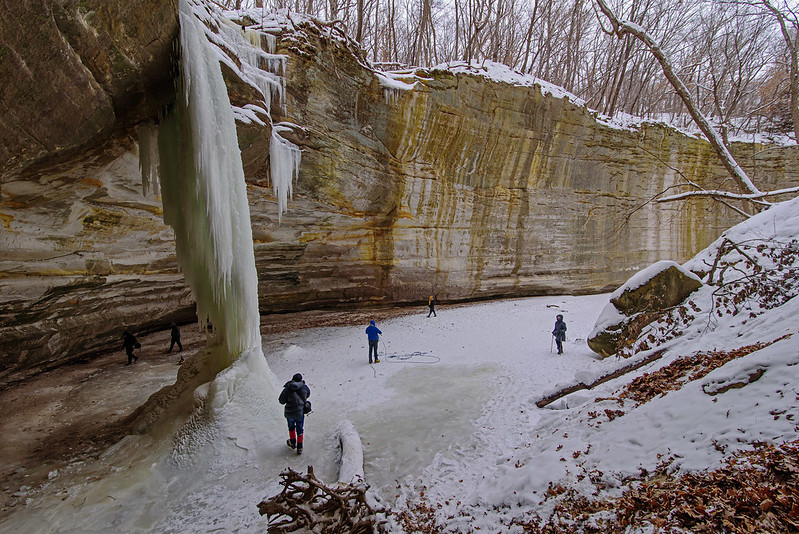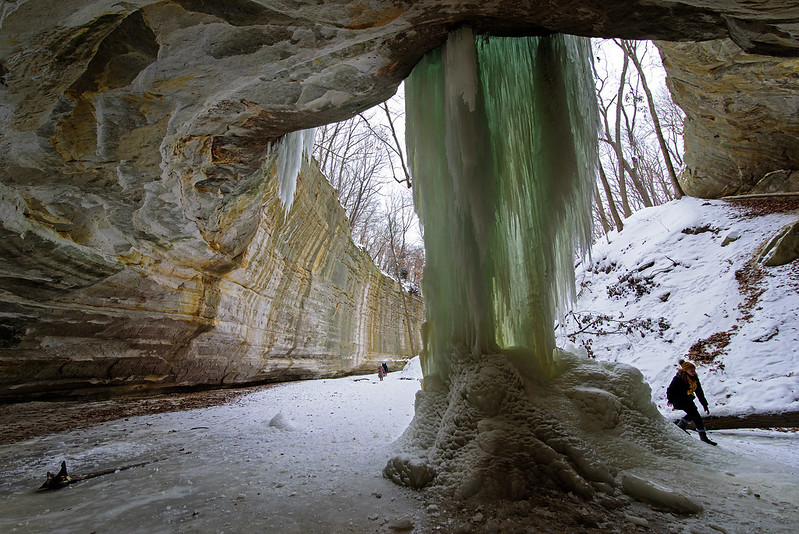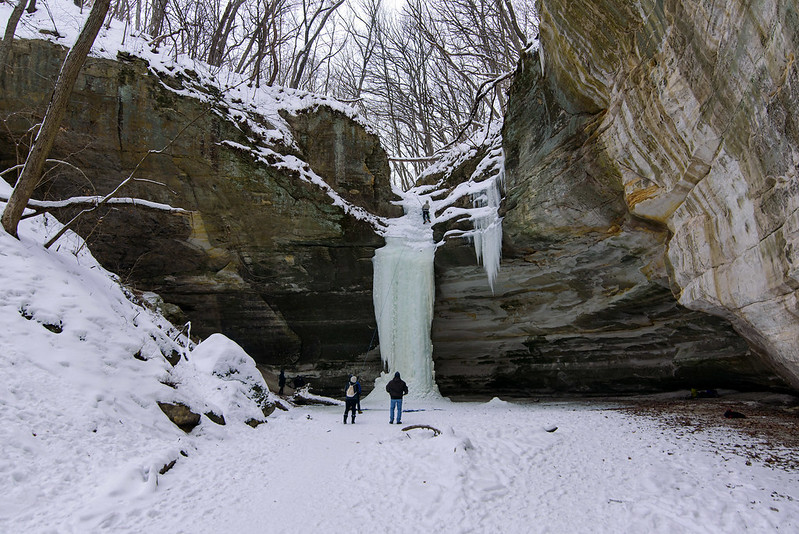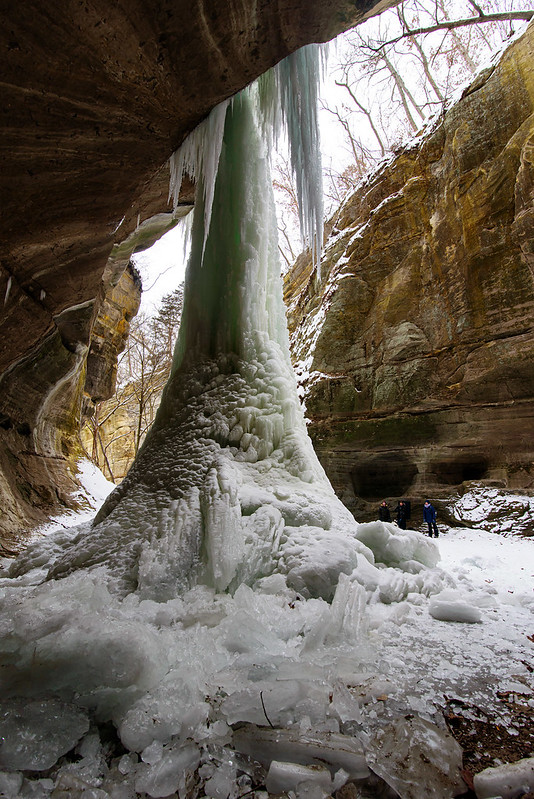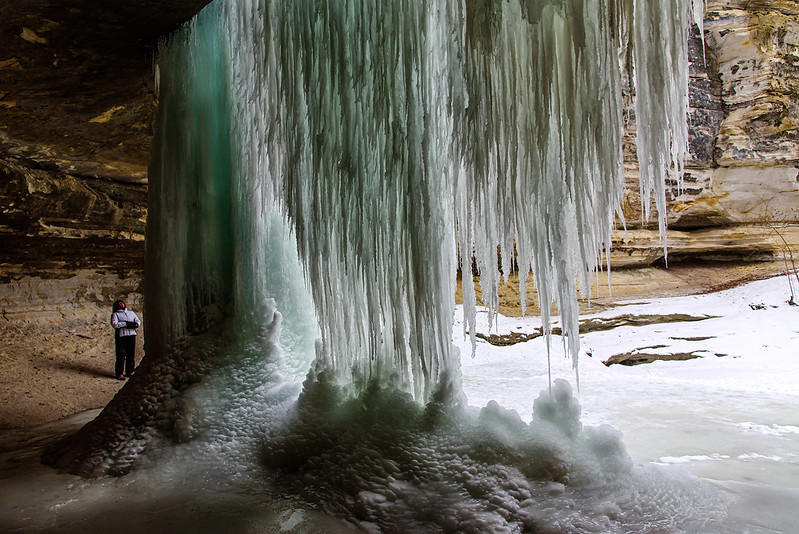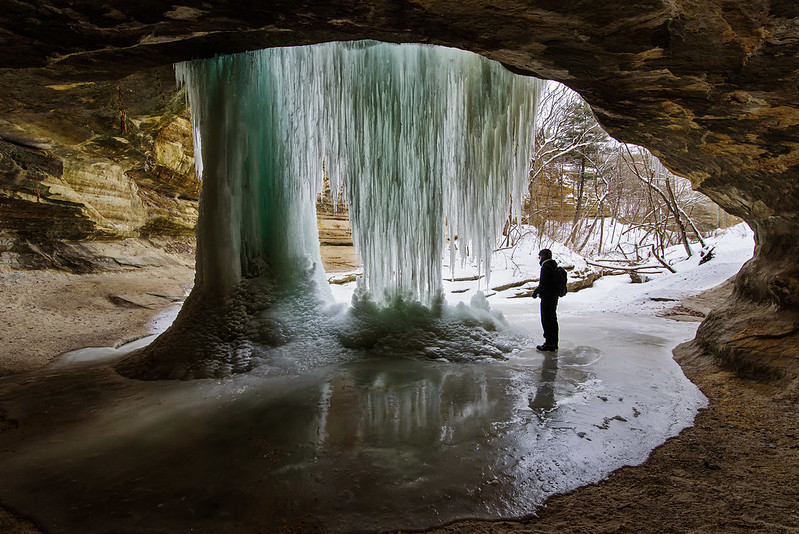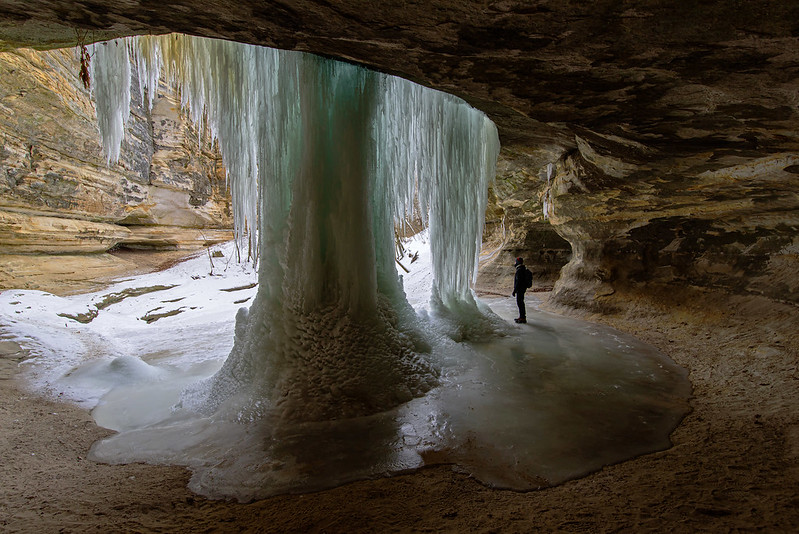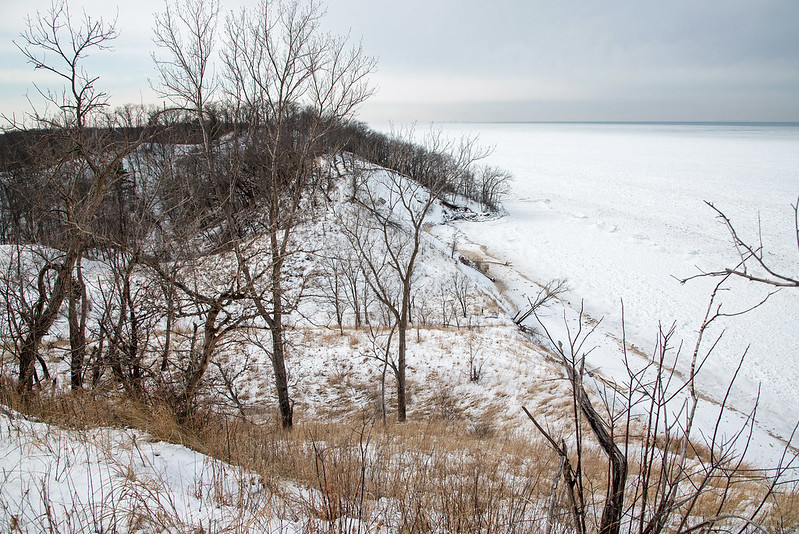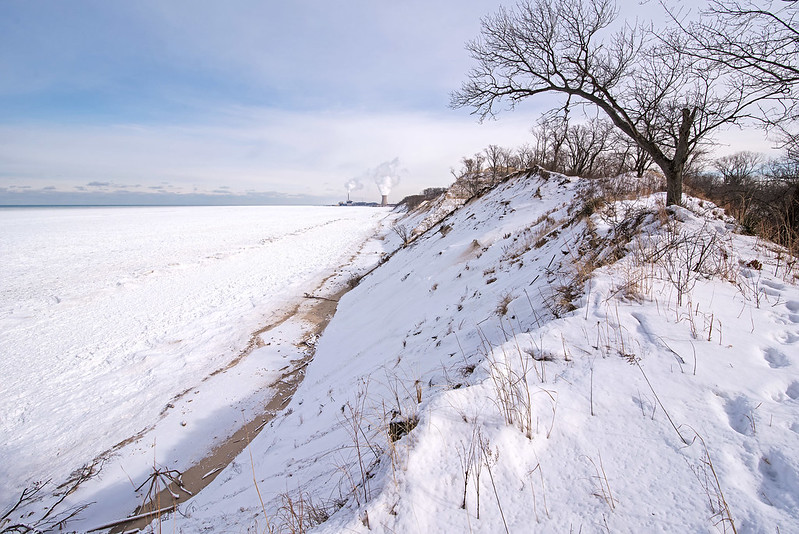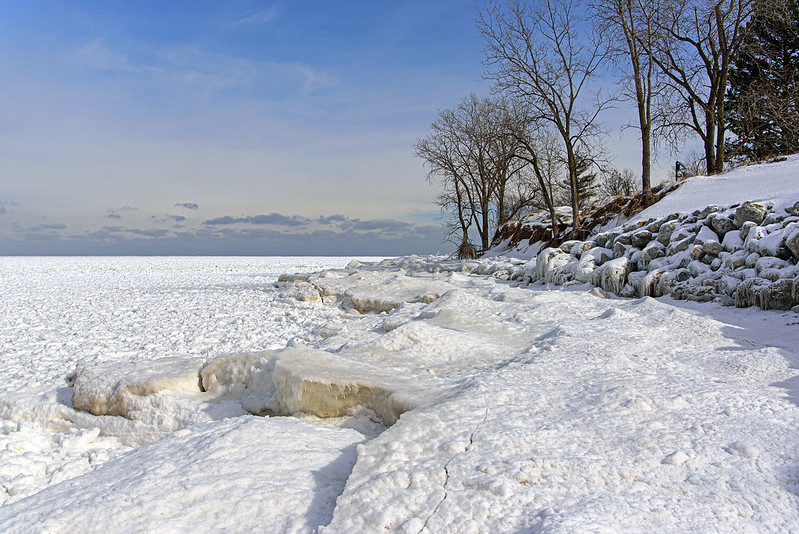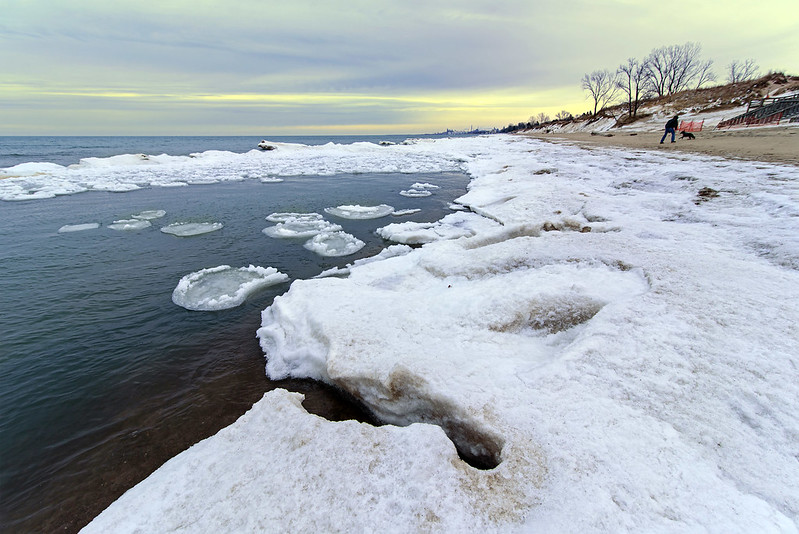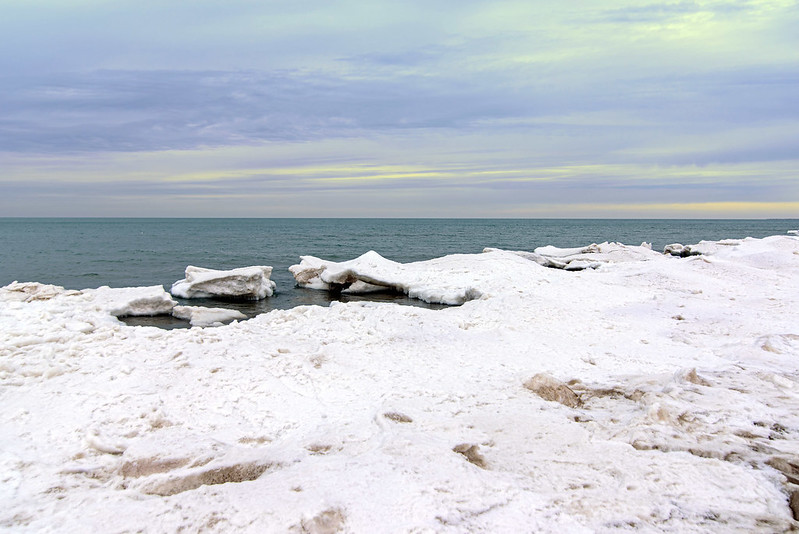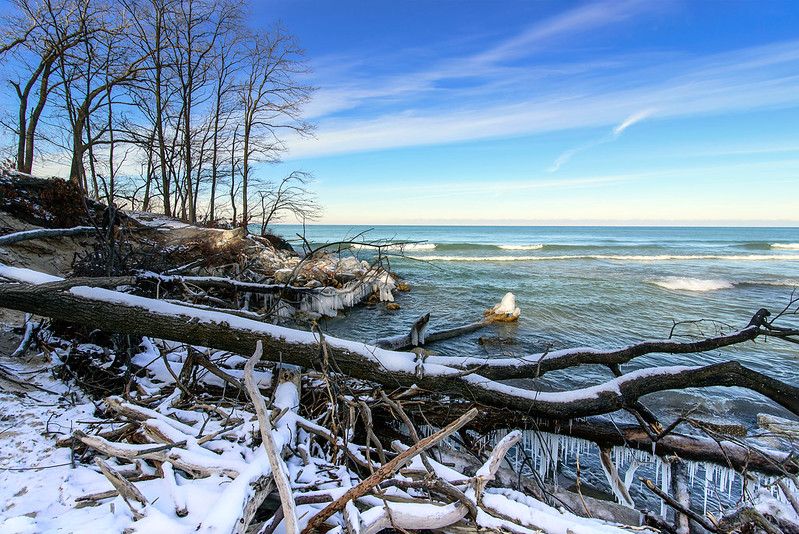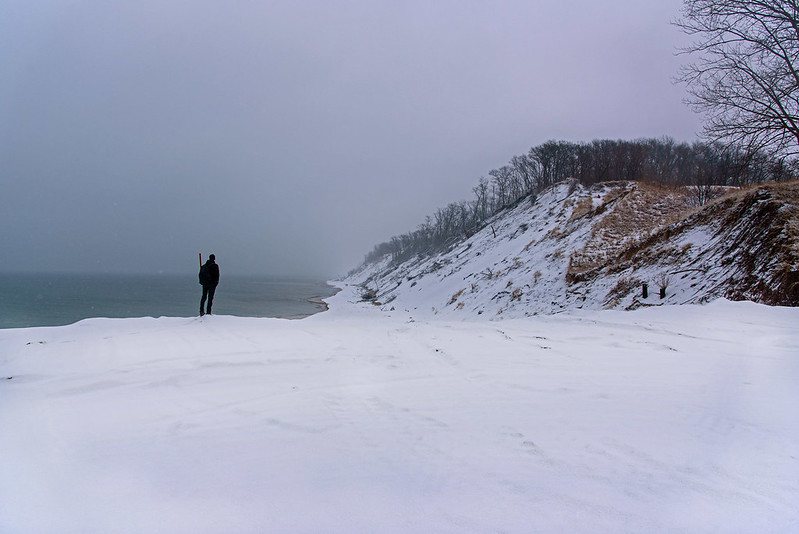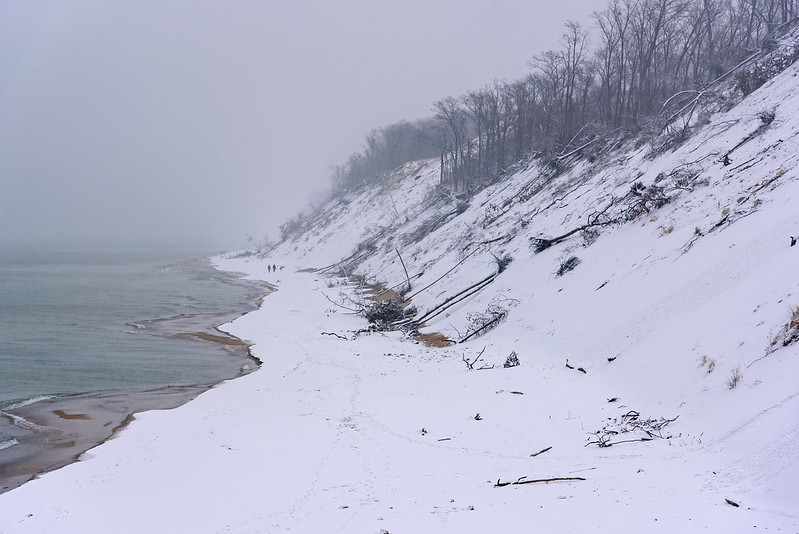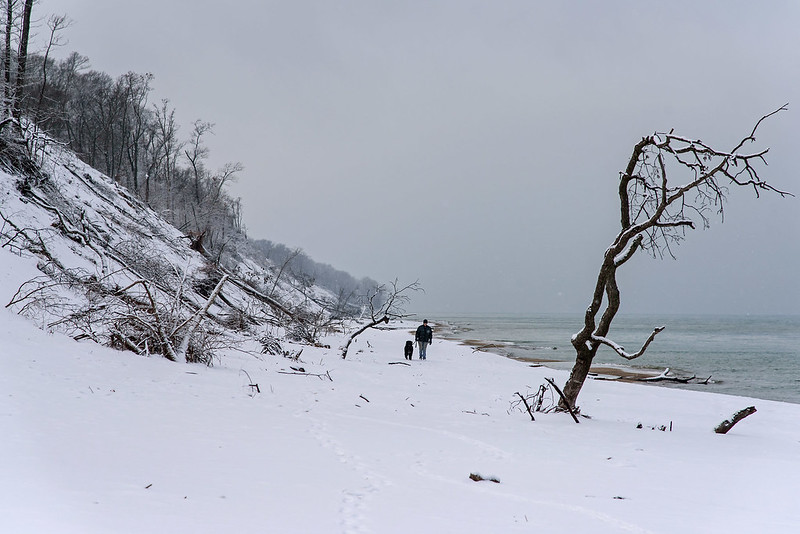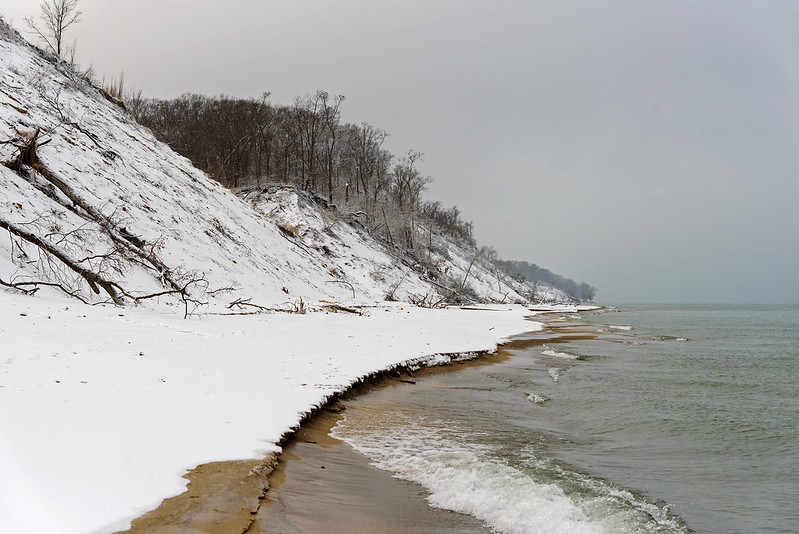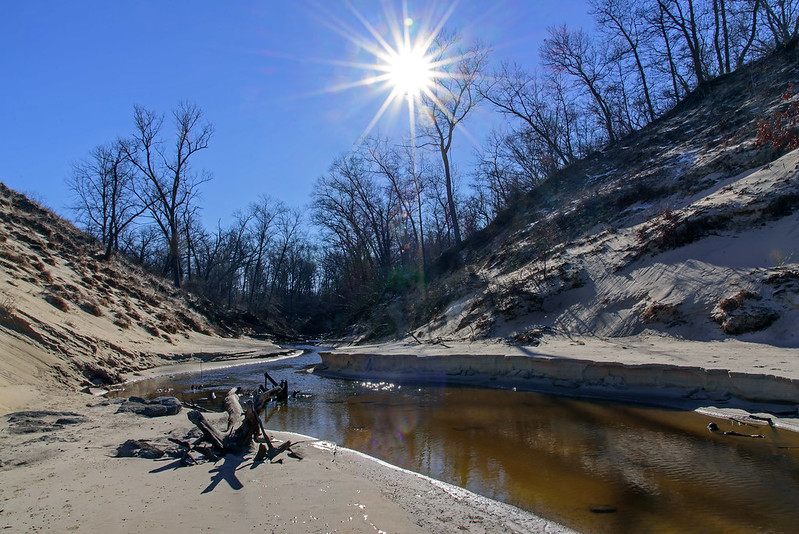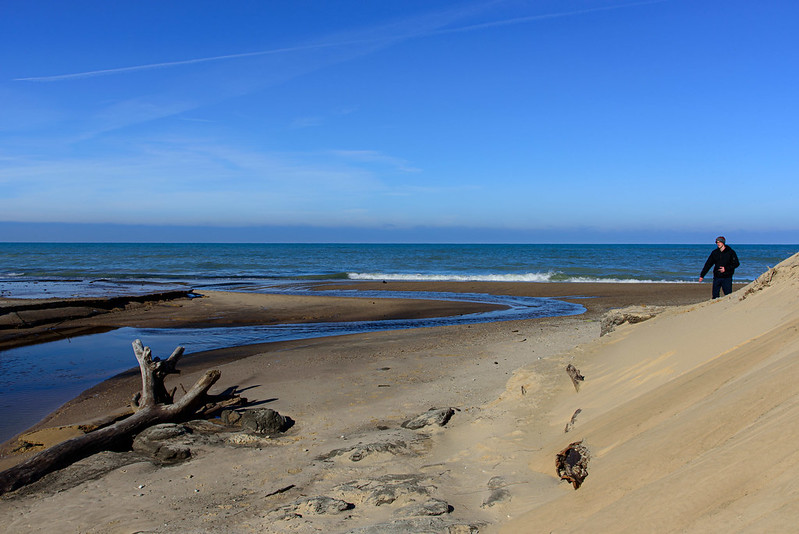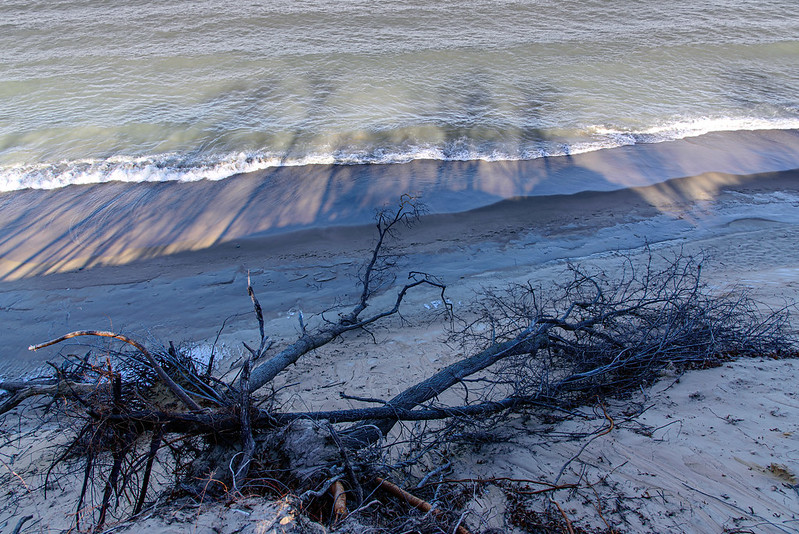
Our hike began about 1/2 mile away, and once down the slippery dune to the beach, we realized just how much snow actually fell over the past couple of weeks. On average, the snow was past our knees as we made our way toward Kintzele Ditch, in a few places it was shallower, but in others, well past our knees. With all the snow, it was difficult to see exactly where the shore was, so we were careful not to walk out onto the shelf ice. Knowing the area very well, we could estimate and stay safe.
When we reached Kintzele Ditch, it too was iced over and covered in snow. The path of the creek can change daily, so we needed to walk where we knew solid ground was beneath us. If you look closely, you will see our footprints in the snow, walking up to the creek then turning toward the dune. We were able to get to the trail up the dune a bit later. It's an old road that has been abandoned for years, and the snow here was even deeper in spots - up to our pants pockets. That made the walk up pretty difficult and slow, and we questioned if we should try to walk up, but once at the top, we were treated to the scene pictured above. Ice and snow as far as the eye can see on frozen Lake Michigan, and drifted snow all across the dunes and beach. The image is a panoramic image made from three images stitched together.

